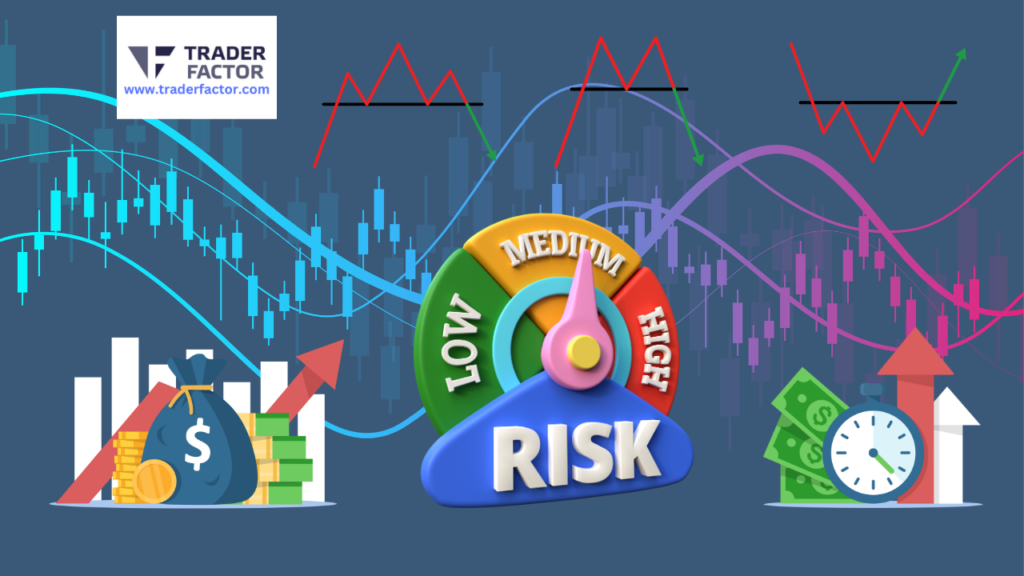If you want to succeed in forex trading, you’ve probably heard the saying ‘knowledge is power.’ And it’s true! Understanding the most effective techniques can give you an edge in the market.
So, what are these techniques? In this article, we will explore the strategies that experienced traders swear by. From technical analysis to price action trading, trend following strategies to breakout trading, there are various approaches you can take to maximize your profits.
And it’s not just about the strategies – risk management and trading psychology also play crucial roles. So, whether you’re a beginner or an experienced trader, buckle up and get ready to discover the most effective forex trading techniques that can help you achieve your financial goals.
Table of Contents
ToggleKey Takeaways
- Technical analysis, fundamental analysis, and price action trading are all important techniques in forex trading.
- Candlestick patterns can be used to identify potential market reversals or continuations and enhance price action trading skills.
- Support and resistance levels can help identify potential breakout trading strategies and improve overall trading performance.
- Trendline analysis can be used for confirmation and to identify the market direction and potential support/resistance areas, increasing the probability of success.
Technical Analysis

Use technical analysis to analyze price charts and identify patterns for more effective forex trading. Price forecasting is an essential aspect of successful trading, and technical analysis provides traders with the tools to make accurate predictions.
By studying historical price data and chart patterns, you can identify trends and potential reversal points in the market.
Chart patterns are formed by the price movements of a currency pair over time. These patterns can provide valuable insights into future price movements and help traders make informed decisions.
Some common chart patterns include head and shoulders, double tops and bottoms, triangles, and flags. Each pattern has its characteristics and implications for price direction.
When analyzing price charts, it’s important to consider both the pattern itself and the volume of trading activity. Volume can confirm or invalidate the pattern, providing additional information to support your trading decisions.
By combining technical analysis with other indicators and tools, such as moving averages or oscillators, you can further enhance your ability to forecast price movements accurately.
Fundamental Analysis

To effectively analyze the forex market, you must consider fundamental factors that influence currency values. Fundamental analysis is a method used by traders to evaluate investments based on economic, social, and political factors that can affect currency prices. It’s often contrasted with technical analysis, which focuses on historical price patterns and indicators.
In fundamental analysis, economic indicators play a crucial role. These indicators provide valuable information about the strength and stability of an economy, which in turn affects the value of its currency.
Some common economic indicators used in fundamental analysis include Gross Domestic Product (GDP), inflation rates, interest rates, employment data, and trade balance. By analyzing these indicators, traders can gain insights into the overall health of an economy and make more informed trading decisions.

One of the advantages of fundamental analysis is that it allows traders to take a long-term perspective on the forex market. By understanding the underlying economic factors driving currency movements, traders can identify trends and potential profit opportunities.
However, it’s important to note that fundamental analysis isn’t a standalone strategy. It’s often used in conjunction with technical analysis to get a comprehensive view of the forex market.
Price Action Trading

When it comes to price action trading, there are three key points to consider.
First, paying attention to candlestick patterns can help you identify potential entry points in the market.
Second, analyzing support and resistance levels can provide valuable insight into where price may reverse or continue its trend.
Lastly, using trendline analysis can help confirm the direction of the market and guide your trading decisions.
Candlestick Patterns for Entry
As you explore the world of forex trading techniques, it’s essential to familiarize yourself with the concept of candlestick patterns for entry, which can greatly enhance your price action trading skills.
Candlestick pattern recognition is a valuable tool that allows traders to identify potential market reversals or continuations based on the patterns formed by the price movement. These patterns can provide valuable insights into market sentiment and help traders make informed decisions about their entry and exit strategies.
By learning to recognize and interpret these patterns, you can gain an edge in the forex market and improve your chances of successful trades.
Some commonly used candlestick patterns for entry include the engulfing pattern, doji pattern, and hammer pattern, each signaling different market conditions and potential trading opportunities.

Support and Resistance Levels
Support and resistance levels are crucial tools for identifying potential breakout trading strategies and implementing effective scalping techniques. By understanding these levels, you can determine the areas where price is likely to reverse or consolidate.
Support levels act as a floor, preventing prices from falling further, while resistance levels act as a ceiling, preventing prices from rising higher. These levels provide valuable insights into market sentiment and help you make informed trading decisions.
When price breaks through a support or resistance level, it often signals a significant shift in market dynamics, presenting opportunities for profitable trades. Incorporating support and resistance levels into your trading strategy can greatly enhance your ability to identify high-probability trade setups and improve your overall trading performance.
Trendline Analysis for Confirmation
To further enhance your price action trading skills, you can utilize trendline analysis for confirmation of potential trading opportunities.

By drawing trendlines on your charts, you can identify the direction of the market and potential areas of support and resistance.
When the price approaches a trendline, it can act as a confirmation signal for a potential trade setup.
For example, if the price breaks above a downward trendline, it could indicate a bullish trend reversal and a potential buying opportunity.
Conversely, if the price breaks below an upward trendline, it could suggest a bearish trend reversal and a potential selling opportunity.
Trendline breakout strategies are commonly used by traders to enter trades with strong momentum and increase the probability of success.
Trend Following Strategies

Now let’s talk about two effective trend-following strategies: moving average crossovers and breakout trading.
Moving average crossovers involve using two moving averages of different periods to identify when a trend is changing direction.
Breakout trading, on the other hand, focuses on entering trades when the price breaks out of a defined range or level of support/resistance.
Both of these strategies aim to capture profits by riding the momentum of a trend.
Moving Average Crossovers
One effective forex trading technique is utilizing moving average crossovers as trend-following strategies.
A moving average crossover strategy involves two moving averages with different periods, typically a shorter and a longer one.
When the shorter moving average crosses above the longer moving average, it signals a potential uptrend, while a cross below indicates a possible downtrend.

Traders often use exponential moving averages (EMAs) for their responsiveness to recent price changes.
This strategy helps identify the direction of the trend and potential entry or exit points.
By following the moving average crossovers, traders aim to capture profits by riding the trend until the crossovers signal a reversal.
It’s important to note that this strategy works best in trending markets and may generate false signals in ranging or choppy markets.
Breakout Trading Strategies
How can you effectively utilize breakout trading strategies as trend-following techniques in forex trading?
Breakout trading strategies are a popular approach for trend followers in the forex market. These strategies involve identifying key levels of support and resistance and entering trades when the price breaks above or below these levels.
When a breakout occurs, it suggests that the price momentum is strong and likely to continue in the same direction, providing an opportunity for traders to profit from the trend.
To effectively utilize breakout trading strategies, it’s crucial to wait for confirmation of the breakout and set appropriate stop-loss orders to manage risk. Additionally, traders should consider incorporating other technical indicators or patterns to increase the probability of successful trades.
Breakout Trading

To improve your forex trading skills, consider incorporating breakout trading into your strategy. Breakout trading is a popular strategy that aims to take advantage of sharp price movements when the market breaks through support or resistance levels.
One common breakout strategy is the trendline breakout, which involves drawing a trendline connecting the highs or lows of a currency pair’s price movement and entering a trade when the price breaks through the trendline.
The key to successful breakout trading is identifying strong support or resistance levels and waiting for the market to break through them. This breakout can indicate a significant shift in market sentiment and the potential for a profitable trade.

By incorporating breakout trading into your strategy, you can take advantage of these price movements and potentially increase your profits.
When implementing a breakout strategy, it’s important to set clear entry and exit points. This helps to manage risk and avoid entering trades too late or too early. Additionally, it’s crucial to use proper risk management techniques, such as placing stop-loss orders, to protect your capital in case the breakout fails.
Scalping Techniques

Incorporating scalping techniques into your forex trading strategy can further enhance your skills and profitability. Scalping is a short-term trading strategy that involves making multiple trades throughout the day to capture small price movements.
It requires precision and quick decision-making, as trades are usually held for only a few minutes or seconds.
One important aspect of scalping techniques is the risk-reward ratio. Since scalping aims to capture small price movements, the risk-reward ratio should be carefully considered. It’s essential to set tight stop-loss orders to limit potential losses and to have a profit target that’s achievable within the short time frame.

Another crucial factor in scalping techniques is time frame selection. Scalpers typically operate on lower time frames, such as one-minute or five-minute charts, to identify quick trading opportunities. These shorter time frames allow for more frequent trades and faster profit-taking.
However, it’s important to note that scalping requires a high level of focus and discipline. The fast-paced nature of this strategy can be mentally and emotionally demanding. Traders must be able to handle the pressure and make quick decisions under stressful conditions.
Risk Management Strategies

To effectively manage your risks in forex trading, you must implement well-defined risk management strategies. Two key strategies that can help protect your capital and minimize potential losses are hedging techniques and position sizing.
Hedging involves taking opposite positions in different currency pairs to offset potential losses. For example, if you have a long position in EUR/USD, you could open a short position in USD/CHF.
This way, if the value of the euro decreases, the Swiss franc’s appreciation can help mitigate your losses. Hedging can be an effective way to protect your trades against unexpected market movements.
Position sizing is another important aspect of risk management. It involves determining the appropriate size of your trades based on your risk tolerance and account size. By properly sizing your positions, you can limit the potential impact of losing trades on your overall portfolio. A common rule of thumb is to risk no more than 1-2% of your trading capital on any single trade.

Trading Psychology
Managing your emotions is crucial for successful forex trading. Developing a strong trading mindset and maintaining emotional control are key components of a trader’s success. Your trading mindset refers to the beliefs and attitudes you hold about trading, while emotional control refers to your ability to manage and regulate your emotions during trading.
Having the right trading mindset is essential as it helps you make rational decisions based on analysis and strategy rather than being swayed by fear or greed. It involves being disciplined, patient, and having a long-term perspective.
By cultivating a positive and confident mindset, you can approach trading with a clear and focused mindset, which can enhance your decision-making abilities.
Emotional control is equally important as it allows you to stay calm and composed during market fluctuations. It helps you avoid impulsive decisions driven by emotions such as fear or excitement. By mastering emotional control, you can minimize the impact of emotions on your trading decisions and stick to your trading plan.
To enhance your trading psychology, it’s crucial to practice self-awareness and mindfulness. Recognize and acknowledge your emotions while trading, and take steps to manage them effectively. This could include techniques such as deep breathing, meditation, or taking breaks when you feel overwhelmed.

Frequently Asked Questions about Effective Forex Trading Techniques
What Are the Best Time Frames to Use for Technical Analysis in Forex Trading?
To decide on the best time frames for technical analysis in forex trading, consider the best indicators for day trading and how to use moving averages. These factors will help you make informed decisions.
How Can I Determine the Strength of a Trend Using Price Action Trading?
To determine the strength of a trend using price action trading, you can look for candlestick patterns like engulfing or doji. These patterns can help identify potential trend reversals.
What Are Some Common Risk Management Strategies That Forex Traders Use?
To effectively manage risk in forex trading, you need to implement various techniques. Position sizing strategies, such as using stop-loss orders and setting risk-to-reward ratios, can help protect your capital and minimize potential losses.
How Can I Overcome Fear and Greed in My Trading Psychology?
To overcome fear and greed in your trading psychology, it’s important to develop discipline. By following a well-defined trading plan, setting realistic goals, and managing your emotions, you can make more rational and effective trading decisions.
Are There Any Specific Indicators or Tools That Are Commonly Used in Breakout Trading?
To effectively trade breakouts in Forex, it’s important to use specific indicators and tools. These can include moving averages, Bollinger Bands, and Fibonacci retracements. Incorporate these strategies into your trading plan for better results.

Conclusion
So there you have it – a brief overview of some of the most effective forex trading techniques. Whether you prefer technical analysis or fundamental analysis, price action trading, or trend-following strategies, there’s a technique out there that can suit your trading style.
Just remember to always apply risk management strategies and maintain a strong trading psychology.
With the right skills and mindset, you can navigate the forex market with confidence and increase your chances of success.
Disclaimer:
All information has been prepared by TraderFactor or partners. The information does not contain a record of TraderFactor or partner’s prices or an offer of or solicitation for a transaction in any financial instrument. No representation or warranty is given as to the accuracy or completeness of this information. Any material provided does not have regard to the specific investment objective and financial situation of any person who may read it. Past performance is not a reliable indicator of future performance.
















